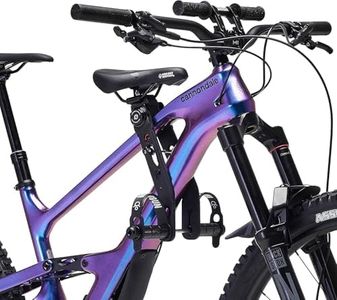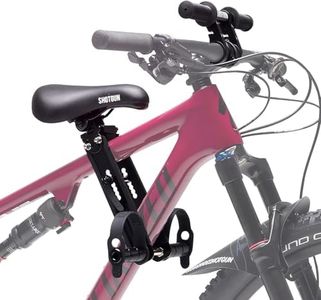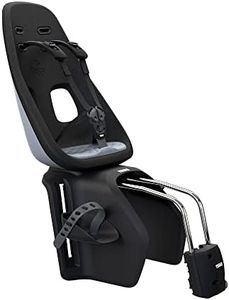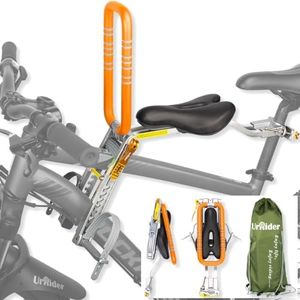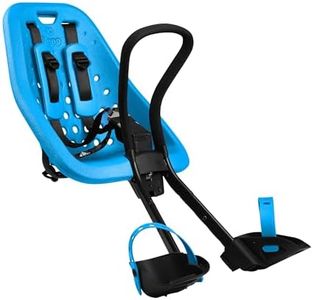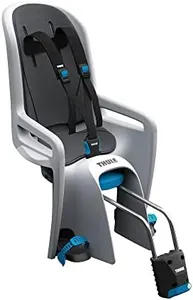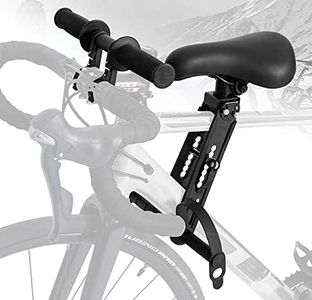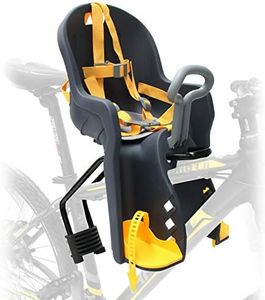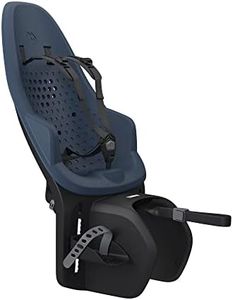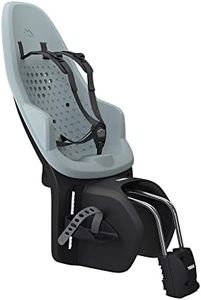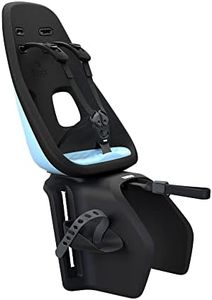We Use CookiesWe use cookies to enhance the security, performance,
functionality and for analytical and promotional activities. By continuing to browse this site you
are agreeing to our privacy policy
10 Best Child Bike Seats
From leading brands and best sellers available on the web.Buying Guide for the Best Child Bike Seats
Choosing the right child bike seat is crucial for keeping your child safe and comfortable while you ride together. The best seat for you depends on your bicycle type, your child's age and size, your usual riding conditions, and how often you plan to use the seat. Start by considering where the seat attaches to your bike and the safety features it offers. Always ensure the seat meets the latest safety standards, and double-check compatibility with your own bike.Mounting PositionMounting position refers to where the seat is attached on your bike: front-mounted (ahead of the handlebars), rear-frame mounted (behind the rider on the frame), or rear-rack mounted (on a rack over the back wheel). Front-mounted seats keep your child between your arms and allow for greater visibility and interaction, but they are usually for smaller, lighter children. Rear-mounted seats generally fit older, heavier children and are considered safer due to less interference with steering, but they make your bike heavier at the back. For most families, the best choice depends on the child's age and your comfort handling the bike with extra weight.
Weight and Age LimitEvery bike seat is rated for a certain weight and age range, which ensures your child is safe and comfortable inside. Typical front-mounted seats are suitable for younger children (usually 9 months to 3 years), while rear-mounted seats can accommodate older and heavier kids (up to around 6 years old or as specified by the manufacturer). Always check the seat's rating and match it to your child's current and near-future size for both safety and longevity of use.
Harness and Restraint SystemThe harness system keeps your child securely fastened in the seat. Most seats use a three-point or five-point harness; a five-point system offers more security by holding the shoulders, waist, and between the legs. For younger or wiggly children, prioritize a secure harness that is easy to adjust and fasten. Make sure the straps are padded for comfort and straightforward to use so you can buckle your child in quickly and correctly every time.
Footrest and Leg ProtectionFootrests and leg shields are designed to keep your child’s feet safely away from the bike's moving parts. Adjustable footrests will let you adapt the seat as your child grows, adding to the seat’s usable life. Some seats also have foot straps to keep feet in place, which is particularly important if your child is active or likes to wriggle. Choose a seat that offers solid leg protection to avoid accidental contact with the wheels or spokes.
Cushioning and ComfortComfort features include padded seats, reclining functions, and headrests. Well-padded seats can make longer rides more enjoyable and less tiring for your child, while a reclining option lets younger children nap safely. Evaluate which comfort features matter based on how frequently you ride and how long your trips usually are.
Ease of Installation and CompatibilitySome bike seats are easier to install and remove than others. Seats that click into place with quick-release mechanisms simplify the transition between solo and family rides. It's also important to make sure the seat is compatible with your specific bike, as some seats only fit certain types of frames or racks. If you plan to switch the seat between bikes, look for models that are designed for easy transfer.
Safety Standards and VisibilitySafety certifications (such as meeting national or international standards) indicate that a seat has passed tests for strength, security, and impact resistance. Some seats include built-in reflectors or spots for attaching lights; these improve your visibility to other road users, especially in low light conditions. Always prioritize seats that meet or exceed safety standards and consider visibility features if you’ll be riding in traffic or dusk/dawn.
